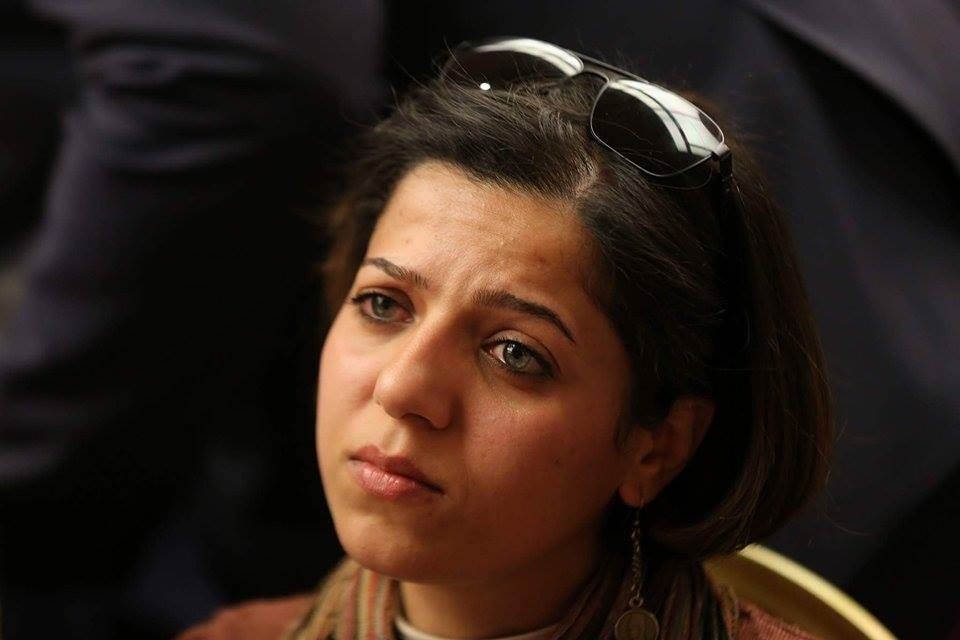Hiba “al-Hayat” Obaidat
I stopped writing for a good period of time. I no longer have the ability to follow such a weary and problematic file that has almost proved to be the most difficult in my career as a journalist. This file has been an ethical dilemma when it comes to writing about the Syrian asylum crises, especially in the absence of transparent information circulation in Jordan.
The first problem begins with the difficulty of obtaining information on the asylum case. Such information is absent even from official institutions and some international organizations. The official authorities handle the file with strict security and confidentiality, and therefore try to minimize any related statements to protect and maintain the image of Jordan before the international community in order to obtain funding. They are also taking into consideration “ISIS” and their association with the asylum case.
On the other hand, international organizations are trying as much as possible to avoid collisions with official bodies. Some even believe that their role on the ground has somehow diminished. Therefore, many of them are walking on the government’s footpath by minimizing their statements or denying the journalists’ request for information.
In the absence of a transparent information circulation, half of the information is absent from the official side, which believe that censoring information is better than presenting it transparently. Such act, however, is detrimental to the image of Jordan, which is bearing the consequences of hosting Syrian asylum seekers and refugees alone.
The second problem is intangible. It is the feeling that you have become part of the refugee camp yourself with all its repercussions and pain. How can you divert yourself from this feeling as you constantly communicate with the refugees to obtain and document information? And how can you change your feelings as you hear in their voices a cry for help? A cry that pushes you to spread their suffering hoping that this may help in bringing an end to their agony?
The problem of camps for Syrians inside Jordan bears a great suffering that is highlighted in all sectors of life. However, those living in the camps near the northeastern border between the Jordan and Syria know that the suffering goes beyond the labor, education, or other sectors. The suffering is highlighted in the most important human right: “The right to live”.
I was able to communicate with one of the nurses in the Al-Hadlat camp. The said nurse wanted desperately to know if publishing some material about the camp would bring any light of hope. He endeavored to highlight the importance of conveying the story hoping that it may land on keen ears and eyes that care for the suffering in these camps.
In order to be clear, the hopes of many refugees living in these camps have faded upon entering Jordan, where their hopes were scaled down to mere aid and medical services that will enable them to live in these communities.
I clearly remember one of the videos I received from the nurse. The video was of a child under the age of 3: his eyes were not yet closed; his hair was still growing, brown-skinned, very thin, and wearing yellow wool trousers and a patched blouse. Efforts were launched to re-summon his breaths on a rack in a tent, but to no avail. He did not respond to any resuscitation attempts, no reactions appeared on him, his body was slender and dry as the nurse concluded: “He’s dead!”
Yes, he died of starvation or lack of food, no matter what you call it. He lost his life to malnutrition and drought, but he is not the only one. Dozens of children have lost their lives to lack of proper health and medical services in al-Hadlat and al-Rukban camps. This picture is still stuck in my mind; a picture that will remain immortal and painful to increases our sense of loss of humanity. Who bears responsibility? Who?
Upon following up on the camp case, you will be convinced that whatever you try to write about the suffering there, you will fail to describe a small part of this agony, especially after the borders were militarily closed, and organizations and refugees where denied entrance. After all, how do you describe a real suffering that you could not see with your eyes?
Writing here only addresses the videos we obtain, which summarizes only part of this suffering with the voices of refugees filled with all forms of agony; voices that seek hope in a world governed only by the policies of States.
There are many stories of agony. Each story bears enough suffering to inflict upon you a scarring pain; an agony that accompanies you as you attempt to live with the suffering you couldn’t describe in more than a few lines. All these voices are seeking hope that may seem to us as a form of promotion or propaganda. They seek only the “right to live”! Can we believe that people still die of starvation and cold? Can we believe that children lose their childhood in an atmosphere and reality they didn’t cause?
I reckon some of us know and understand part of this reality, but we try to forget it to maintain an ideal life away from any problems. Yes, I have written a newspaper article, but the story did not end. My feelings did not stop there as well, but have become a prisoner of suffering I have only experienced through the phone and social networks. I can only imagine how hard it is to live this suffering as a tangible reality?
Can we together imagine this painful reality and try to change it with what we have, and what we can do?
Read the Arabic version here



